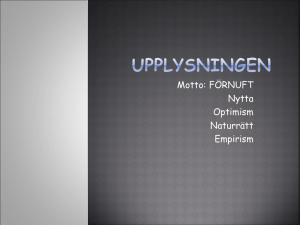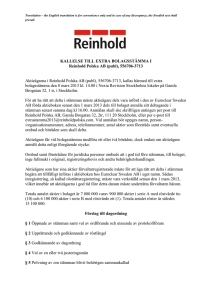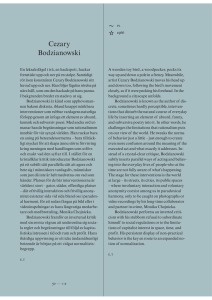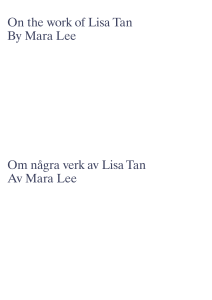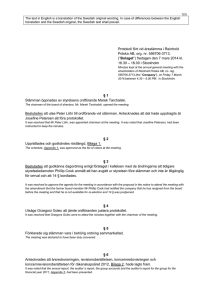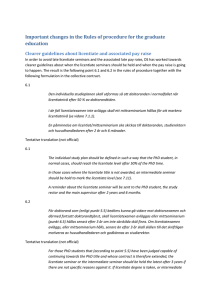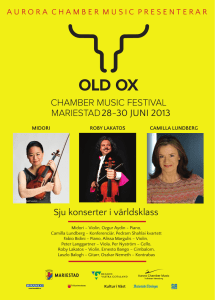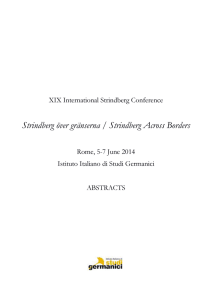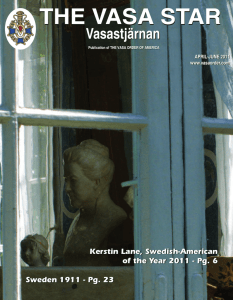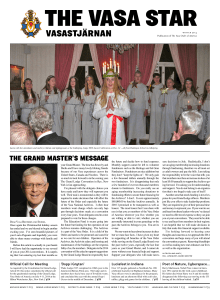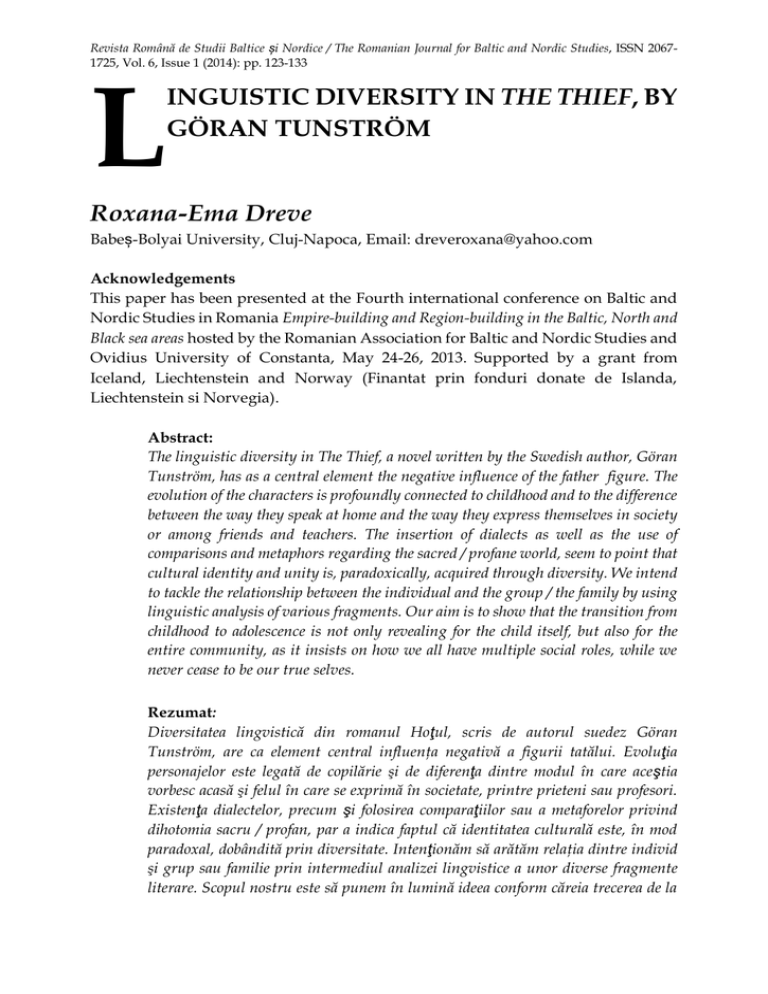
Revista Română de Studii Baltice și Nordice / The Romanian Journal for Baltic and Nordic Studies, ISSN 20671725, Vol. 6, Issue 1 (2014): pp. 123-133
L
INGUISTIC DIVERSITY IN THE THIEF, BY
GÖRAN TUNSTRÖM
Roxana-Ema Dreve
Babeș-Bolyai University, Cluj-Napoca, Email: dreveroxana@yahoo.com
Acknowledgements
This paper has been presented at the Fourth international conference on Baltic and
Nordic Studies in Romania Empire-building and Region-building in the Baltic, North and
Black sea areas hosted by the Romanian Association for Baltic and Nordic Studies and
Ovidius University of Constanta, May 24-26, 2013. Supported by a grant from
Iceland, Liechtenstein and Norway (Finantat prin fonduri donate de Islanda,
Liechtenstein si Norvegia).
Abstract:
The linguistic diversity in The Thief, a novel written by the Swedish author, Göran
Tunström, has as a central element the negative influence of the father figure. The
evolution of the characters is profoundly connected to childhood and to the difference
between the way they speak at home and the way they express themselves in society
or among friends and teachers. The insertion of dialects as well as the use of
comparisons and metaphors regarding the sacred / profane world, seem to point that
cultural identity and unity is, paradoxically, acquired through diversity. We intend
to tackle the relationship between the individual and the group / the family by using
linguistic analysis of various fragments. Our aim is to show that the transition from
childhood to adolescence is not only revealing for the child itself, but also for the
entire community, as it insists on how we all have multiple social roles, while we
never cease to be our true selves.
Rezumat:
Diversitatea lingvistică din romanul Hoţul, scris de autorul suedez Göran
Tunström, are ca element central influenţa negativă a figurii tatălui. Evoluţia
personajelor este legată de copilărie şi de diferenţa dintre modul în care aceştia
vorbesc acasă şi felul în care se exprimă în societate, printre prieteni sau profesori.
Existenţa dialectelor, precum şi folosirea comparaţiilor sau a metaforelor privind
dihotomia sacru / profan, par a indica faptul că identitatea culturală este, în mod
paradoxal, dobândită prin diversitate. Intenţionăm să arătăm relaţia dintre individ
şi grup sau familie prin intermediul analizei lingvistice a unor diverse fragmente
literare. Scopul nostru este să punem în lumină ideea conform căreia trecerea de la
Revista Română de Studii Baltice și Nordice / The Romanian Journal for Baltic and Nordic Studies 6 (1)
copilărie la adolescenţă este esenţială nu doar pentru copil, ci şi pentru întreaga
societate, deoarece insistă asupra multiplelor roluri pe care le deţinem în
comunitate, în timp ce niciodată nu încetăm să fim cu adevărat ”noi”.
Keywords: identity, childhood, abuse, transition, memory
In The thief, a novel written by the Swedish author Göran Tunström,
one of the sources of introspection– acting as a catalyst for the true identity
of characters – is illustrated by the father figure. Following the emergence of
non-compliance and dissolution, we realize that the non-being or the
indifference of parents can install the child’s fluctuation between his
chronological and his spatial references. From the non-being different
techniques used to approach a literary text, we believe that the primacy of
details – typical of fractals – as well as the analysis of symmetrical and similar
fragments could present, in its complexity, the transition from childhood to
adolescence.
In order to refine the functioning of the self-similar sequences that
exist between the various characters of the novel, we have spotted many
literary events in relation to self biography. The first aspect that drew our
attention was the desire to be in “the father’s shoes”. Let’s only think about
Göran Tunström’s statement : ”My mother says that I resemble my father so
much”1[our translation], that finally projects itself on the literary text, giving
birth to a dual, yet logical author. From this perspective, Tunström is not
only the writer of The thief, but the thief himself2 [our translation].
Another element that we considered to be very important for the
representation of self biographical and self-similar characteristics of
childhood is related to a seemingly contradiction. Reading the novel we can
discover many repetitions. The text, however, is not repetitive. In this regard,
a most intriguing role is given to the polyphony of characters, since the
children represent different, but complex aspects of the author’s life and
creations. Let’s focus on Johan, abandoned by his real biological father or on
his adoptive mother, a woman who dreams to be a writer while her husband
can barely spell her name: Ida Veronica. This mutation, expressed further
1”Min
mor siger at jeg ligner min far så meget”. Doris Ottesen, Om kærtegn: det guddommelige
i Göran Tunströms forfatterskab (Frederiksberg: Materialecentralen, 1989), 81.
2 ”Det är jag som är Tjuven”. Göran Tunström quoted by Lars-Olof Billvik, Gudsriket i
Värmland. En tvärvetenskaplig studie av Selma Lagerlöf och Göran Tunströms författarskap utifrån
tre teologiska temata (Lund, Lunds Universitet: Teologiska Institutionen, 1988), 13.
124
Linguistic diversity in The Thief, by Göran Tunström
more through the dichotomy written / oral language, remains fundamental
for the plot, because, as Philipe Lejeune presents it, ”all men carry a kind of
rough, constantly reworked, of their life story”3[our translation]. Or, from
this point of view, adolescence, childhood, love, memory, marginalization –
are all related to paternal filiation.
The father’s entrance in Tunström’s universe can be observed already
from the author’s first narrative texts. If Quarantine4 is based on the history
of Henrik Synge and the relationship that this man establishes with his
suicidal parent, The dandelion ball5 stages two heroes that are experimenting
the suffering after the genitors’ absence : Sigfrid and Bastian. The holy
geographers6 is founded on Jacob’s yearning after Hans-Christian Wermelin,
his missing father, while the self biographical book, The pastor’s kid7, uses the
metaphor of reason and imagination in order to construct a renewed world
of boyhood. The self analysis8 that Tunström is announcing in The thief seems
to reflect, as well, the dual identity of the father, which makes us believe that
for this particular Swedish author, the recollection of childhood and the
denial of ”classical” genetic anchor points towards the destabilization of the
present and the emerging of the past’s tyranny.
The proliferation of ”once upon a time” produces a shift of the
historical settings and leads to the existence of some characters that grow up
beyond a fixed chronology or “normal” social context. These children prefer
wandering to stability, vagrancy to confinement or dreaming to reality. Gone
in search of traces of the alleged father or of freedom, Johan and Hedvig are
equally exposed to doubts and uncertainties. We cannot remain insensitive
to their despair or fear, while we hear them cry out, with the heroes from The
Christmas Oratorio: ”How could the world start again ?”9 [our translation].
One of the ways needed to rebuild “childhood” is the use of
language. Let’s recall first the fact that with this novel, written in 1986, Göran
Tunström enters the area of pioneering authors regarding the aesthetics of
”Tout homme porte en lui une sorte de brouillon, perpétuellement remanié, du récit de sa
vie”. Philippe Lejeune, Le pacte autobiographique (Paris: Seuil, 1975), 362.
4 Cf. Göran Tunström, Quarantine [Karantän] (Stockholm: Albert Bonniers förlag, 1961).
5 Idem. The dandelion ball [Maskrosbollen] ( Stockholm: Albert Bonniers förlag, 1962).
6 Idem. The holy geographers [De heliga geograferna] (Stockholm: Albert Bonniers förlag, 1973).
7 Idem. The pastor’s kid [Prästungen] (Stockholm: Albert Bonniers förlag, 1976).
8 We refer to the concept introduced by Pierre Bourdieu, Esquisse pour une auto-analyse (Paris :
Raisons d’agir, 2004).
9 ”Hur kunde världen börja?”. Göran, Tunström, The Christmas Oratorio [Juloratoriet]
(Stockholm: Albert Bonniers förlag, 1983).
3
125
Revista Română de Studii Baltice și Nordice / The Romanian Journal for Baltic and Nordic Studies 6 (1)
ugliness. Children doomed to wickedness, to violence or trauma, take in this
text a central role. The logic that governs the relationship between Hedvig
and her father, Fredrik, or between Ida and her adoptive child, Johan,
exposes the intergenerational conflicts in which youths are victims. This
results in a splitting of the inner ”self”. Two types of fragmentation appear
iteratively in connection with the homothetic structure of the novel: the
feminization and the anthropomorphism.
Analyzed from the point of view of the mimetic shimmering, the link
between Johan and Hedvig seems to derive from the family’s instability. The
brother / sister relationship reflects a mismatched collection of self
biographical traces that are still keeping evidence of the suture. The source
of the damage lies in the repeated rape of their mother, a violent image that
the two heroes have to assist to (either directly – by actually seeing the sex
scenes or indirectly – by hearing the sounds made by their parents while
mating). The non-spoken language has here a well established place.
However, far from installing a disjunction of the conscience, the physical
abuse actually makes them grow closer to each other: “Hedvig and Johan
gained the habit of falling asleep early, or better said: they were never able
to fall asleep before the silence was installed on the other side. Every night
they were forced to listen to a strange fight, to the cries of Ida and to Fredrik’s
moans and jumps in the bed writhing walls. They had acquired the habit to
tighten against each other. It hurt so much to hear those noises10”[our
translation].
In The thief the voyeuristic act is associated to the incapacity of
establishing real connections to the family members. Ida’s lack of freedom
inserts a lessening of commitment from her children. Hedvig and Johan
promise each other to never repeat the shameful actions of their parents.11
The heroes’ aversion towards the sexual contact leads to a dual, self-reflected
withdrawal. On the one hand, we can talk about the psychological distance
”Hedvig och Johan hade vant sig av med att somna tidigt, eller rättare sagt: de kunde aldrig
somna innan det tystnade på andra sidan. Natt efter natt tvingades de lyssna till ett underligt
slagsmål, till Idas och Fredriks stönande och gungande i sängen, som fick väggarna att bågna.
De vande sig vid att trycka sig inntil varandra. Det var så plågsamt att lyssna till de där
ljuden”. Idem, The thief [Tjuven] (Stockholm: Albert Bonniers förlag, 1986), 50.
11 See the quotation :
“We will never do this, Hedvig, when we grow up. Never
- No, Johan, never”[our translation].
”-Så ska vi aldrig göra, Hedvig, när vi blir stora. Aldrig.
-Nej, Johan, aldrig”. Ibid. 51.
10
126
Linguistic diversity in The Thief, by Göran Tunström
characterizing the child and the parent, on the other about the unwillingly
recurrence of the father’s gestures. While repeating obsessively the words
”at-the-same-time”, Johan and Hedvig suspend the future and gain
emotional stability: “Hedvig and Johan have only the right to use the dew
water to brush their teeth. […] The first of them who discovers a leaf waits
for the other. Then they shake their heads and pronounce just a word. And
to say it each of them dips his mouth into the soul of the other: ‘At-the-sametime12”[our translation].
A second critical element for the child’s identity is expressed by the
illegal incursion of the two brothers in their teacher’s library. Johan proves
himself to be the protector of his sister, since his gestures reveal a double
responsibility towards Hedvig. He is the initiator to the Swedish reality of
his time; but in the same time he represents Hedvig’s guide to language or
to the fantastic world of books. Their friendship grows progressively to an
intellectual space, while their singularity is gained through the freedom
given by reading.
The common aspects between the use of dialects and the
standardized language as well as the link between the abused child and his
buddy is equally detected by Stina Hammar who insists in Duets torg, on the
heroes’ non-compliance, and on the fact that each of them is for the other
”the true half”13[our translation].
The schizoid movement of consciousness is also described by
anthropomorphism. If mother’s rape has brought together the brother and
his sister, anthropomorphism seems to derive especially from incest.
Exposed to the sexual brutality of her father, Hedvig refuses to accept herself
as a human being, and unconsciously destroys her true “self”. She distances
herself from the world, refuses to talk or connect to other persons and prefers
the company of animals. Her denial of civilization results in the adoption of
a raven named Germund, that becomes her best friend, her confident. In The
thief, the raven acts as a specular double of Hedvig. It has a well defined
personality, it is courageous and strong and, unlike the girl, it is capable of
”Hedvig och Johan får bara använda daggkåpevatten att borsta tänderna i. [...] Den som
först hittar ett blad inväntar den andra. Sedan nickar de och säger ett enda ord. Och de säger
det med en mun in i varandras morgonöppna själar: ‘Sam-tid-igt‘”. Ibid., 46.
13 ”Johan och Hedvig är var för sig ofärdiga. Johan har bara ett halvt ansikte, sedan hans
fostermor Ida trappade honom i stengolvet när han var liten. Hedvig är Johans förlorade ‘äkta
hälft’”. Stina Hammar, Duets torg : Göran Tunström och tankekällorna (Stockholm:
Akademisktryck, 1999), 75.
12
127
Revista Română de Studii Baltice și Nordice / The Romanian Journal for Baltic and Nordic Studies 6 (1)
facing traumatic situations. This is why ”he accompanied her to school and
did not appreciate at all staying in the hallway during classes […]”14[our
translation], an action that legitimizes its central location at the family table:
“At table, Germund had his plate, at the right of that belonging to Hedvig.
She served him first. She leaned towards him and whispered words that
nobody else could hear. Together they were a highly dignified couple and
the fear reduced their court to silence. It would be difficult to say who held
the real power during their brief reign period. Germund took perhaps the
major decisions. Hedvig was the spokesperson15.”[our translation]
The identity of Hedvig takes the form of a labyrinth where
childhood’s specificity can easily be lost. The different part of the ”self” fit
into each other, resulting in a non-linear or sometimes even chaotic nesting.
Among the key-moments of the psychosomatically development we
mention the refusal of the priest to baptize the raven. The snub brings an
inner fragmentation, a kind of betrayal on the part of humanity, divinity, but
also family. The dissolution of identity is here combined with a
decentralization of the “self”. In this regard, the killing of the bird indicates
not only the loss of a true friend, but is equivalent to a metaphorical suicide,
to an emotional collapse16 : “- Germund first. […]
- He is my only friend, she said. […]
- I cannot baptize a raven. I have already made a fool of myself.
-Then you cannot baptise me either.
-I am also your friend, Hedvig, whispered Johan.
She turned her beautiful thin face and her white long neck:
- You, indeed. But you, you are already baptized.
She took a step towards the baptismal font, she clenched her hands
around Germund’s neck and broke it, until her knuckles were white and his
“Han följde med henne till skolan och trivdes inte alls med att får sitta i korridoren under
lektionerna”. Göran Tunström 1986, 78.
15 ”Germund hade en särskild tallrik på Hedvigs högra sida i mitten av matbordet. Hon
serverade honom först av alla. Lutade sig över till honom och viskade ord som ingen annan
kunde höra. De var tillsammans ett mycket värdigt par och deras hov skrämdes till tystnad.
Vem som ägde den reella makten under deras korta regeringstid var svårt att säga. Kanske
fattade Germund de stora besluten. Hedvig var språkröret”. Ibid., 78.
16 ”When Hedvig kills Germund, it is like a suicide. In fact, she dies by her own decision”[our
translation]. ”När Hedvig vrider huvudet av Germund är hennes ändå också ett självmord.
Äntligen dör hon av sitt beslut”. Stina Hammar 1999, 87.
14
128
Linguistic diversity in The Thief, by Göran Tunström
blood spurted. Then she threw the raven in the font and rushed out.”17[our
translation].
The violent attitude towards friends appears also in Stella, a text
taken from The true life. The raven is in this case replaced by a parrot that the
protagonist tries to steal and kill. If in The thief, the murder leads to a double
killing (of Germund and of Hedvig), in Stella the death is limited to the
potential resurrection of identity. In other words, death appears to be a part
of a larger and more complex puzzle that the child approached by curiosity.
Let’s recall a dialogue between Stella and Jakob regarding the need to kill the
parrot and its social implications: “ - What were you doing?
- I wanted to kill the parrot, as you saw.
- Why ?
- Simply…that is what I felt. […]
- Was he old, this parrot?
-I don’t know.
-You don’t know. It wasn’t yours then?”18 [our translation]
Prevented by Jakob’s voyeurism, the murderous act indicates only
the burst of an identity crisis. At the end, the “about to be” crime helps the
girl establish a friendship with the boy: ”Jakob got up and took her by the
“Germund först. […]
- Han är min enda vän, sa hon. […]
- Jag kan inte döpa en kråka. Jan har redan gjort mig löjlig.
-Då kan du inte heller döpa mig.
-Jag är också din vän, Hedvig, viskade Johan till henne.
Hon vred det späda fina ansiktet på den långa vita halsen:
-Du ja. Men du är ju redan döpt, du.
Hon tog ett steg fram mot dopfunten, knöt handen runt Germunds nacke och bröt den, tills
de små knogarna vitnade och blodet sipprade fram. Hon slängde kråken i dopfunten och
rusade ut.” Göran Tunström 1986, 85-86.
18 “- Qu’est-ce que tu faisais ?
- J’avais envie de tuer le perroquet, tu l’as bien vu.
- Pourquoi ?
- Simplement…je le sentais comme ça. […]
- Il était vieux, ce perroquet ?
-J’sais pas.
-Tu ne sais pas. Il n’était pas à toi, alors ?”. For this story we have used the French version,
since the Swedish one was unavailable to us. Göran Tunström, ‘Stella’, De planète en planète
[Det sanna livet], 1993, 868.
17
129
Revista Română de Studii Baltice și Nordice / The Romanian Journal for Baltic and Nordic Studies 6 (1)
hand. […] They often stopped to look back. The liquorice ribbon bound them
together”19[our translation].
Taken into account the irregularity, the lack of freedom, the linguistic
diversity and the disappearance of parents, The thief describes the spiritual
adventure of a child while moving to adolescence. The mental wandering
refers to the modular imbrications of the ”self”. This is the case of Johan, a
character that transforms the scenes of wandering and hiding in areas of
revelation and intellectual foundation. Of all the symbolic places in the text,
it is Hägern’s library that installs the synaesthesia game. The journey into the
bookish universe is to the young Johan an opening to infinity. Indeed: ”so
reduced the outside world, but so vast the inner world for those who knew
where the Keys were!”20[our translation].
A fruit of a passing relationship, the progeny of Johan makes us
worry early in the novel by the strangeness and brutality that characterizes
it. Abandoned by his biological father, the boy is raised by Ida and Fredrik.
But nothing positive ever comes from the relationship between Johan and
his adoptive parents. It is only through reading that the boy is able to go
beyond the family’s abuses and discover himself. In the text, this dichotomy
is expressed by the use of dialects versus refined and well-developed
vocabulary. This recovery occurs gradually, by each incursion into the
mystical land of the library.
For Tunström, the spiritual wandering is placed at the edge of the
sacred and it implies a transformation of the inner child. The change
experienced by Johan is exposed by the juxtaposition of adjectives (”new”,
”genuine”, ”bohemian”), nouns (”threshold”, ”way”, ”entrance”) or verbs
(”enter”, ”cross over”, ”find”) and indicate the idea of illegal border
transgression. By following the path of the bohemian, we realize that his
transformation is facilitated by the sterility of the family and of the social
environment. The ”at-home” gives place to a stroll in a city-abyss embodying
the attributes of a palimpsest. The walk suggests in this case the transition
towards new horizons, but also the exploration of the unconscious.
Initiated at a mental level, the “possession” of the spirit is later
reflected on the body. The traces of the transfiguration become visible
”Jakob se leva et la prit par la main. […] Souvent, il s’arrêtait pour se retourner. Le ruban
de réglisse les liait”. Ibid., 870.
20 “Så litet av yttre värld och vilken stor inre för dem som visste var Nycklar fanns!”. Göran
Tunström 1986, 104.
19
130
Linguistic diversity in The Thief, by Göran Tunström
through ”the heat who was rising in his body […]. He looked around him
with completely new eyes and saw the books’ variously colored
covers”21[our translation]. The revival is also illustrated in the sentence:
“Fifty pages later Johan woke up dazed and new: a light from another world
illuminated his head”22[our translation].
The universe that the child discovers following the entry in the
Hägern’s library is vast and unpredictable and characterized by potentiality.
However, the movement of Johan is the subject of a soon-to-be-gained
maturity. ”The self” emerges from the conscious action of entering a
prohibited area. The recurrence of unintentional gestures and attitudes,
subject to the incomprehensible23, accompanies the crossing of childhood’s
threshold: “Upon entering this home, Johan crossed the threshold that
would forever separate him from the humble side he had so far shown
Fredrik. He was about to find his way”24[our translation] or “Near him was
another world. And, as if he had looked for a real entrance to this world he
arrived in what was the office of the Hägern”25[our translation].
Mircea Eliade noted with regard to the relationship between the
sacred and the profane that the break operated in space allows the formation
of the World, because it is able to find the central axis of future26. We agree
with the philosopher. Indeed, the transition to maturity equals in The thief to
the entrance in the unconsciousness. From this perspective, the teacher
represents a link between the past and the present, between the reality and
the imaginary universe. Johan, who was actually ”eating”27[our translation]
knowledge is ensured of the superiority of his status by the enthusiastic
”Värmen steg i Johans kropp. Han såg sig om med nya ögon och de föll på böckernas
olikfärgade omslag”. Ibid. 100.
22”Femtio sidor senare vaknade Johan till liv, omtumlad och ny: ljuset från en annan värld
genomspolade huvudet”. Ibid., 101.
23 Carl Jung analyzes this relationship in ‘The relations between the Ego and the Unconscious’,
Joseph Campbell, ed., The Portable Jung (New York: Viking Press, 1971).
24”När Johan klev in i huset tog han ett steg över en tröskel som for alltid skulle avskilja honom
från den hunsade del av sin personlighet han hittills visat Fredrik. Han stod i begrepp att
finna sin väg”. Göran Tunström 1986, 99.
25 ”Johan ville in i tavlans värme. Helt nära honom fans en annan värld. Och som om han
letade efter en verklig ingång till den världen kom han in i det som var Hägerns arbetsrum”.
Ibid., 99.
26 Mircea Eliade, The sacred and the profane. The nature of religion (San Diego: Harcourt Brace
Jovanovich, 1987).
27 ”Han åt, skulle han senare säga”. Göran Tunström 1986, 104.
21
131
Revista Română de Studii Baltice și Nordice / The Romanian Journal for Baltic and Nordic Studies 6 (1)
encouragement of Hägern: ”But it’s rather your story than mine”28[our
translation] or ”The silver Bible is your book, Johan!”29[our translation].
As the story progresses, the Bible becomes the pivot around which
the story of the protagonist is woven. The discovery and the recovery of
ancestral legacy associated with Johan’s mental drift appear, paradoxically,
as a source of life and fertility. The narrator points out in this regard that the
boy ”had a treasure”[our translation].
The spiritual journey of the character indicates the potential to solve
the problem of becoming, by setting a personality transplant resulting in the
multiplication of the ”self”. Johan – a shy child, Johan – a courageous
lecturer, Johan – an empathic brother, Johan – an abusive lover, Johan – the
thief, are all one and the same person. The transition from the profane sphere
to the transcendental level reveals, in rotation, the heroes’ faces, it forms,
deforms and transforms his soul.
This movement is also undertaken by Tunström who reveals in his
literary creation the wounds of his first years. This is the way he makes us
discover the vicissitudes of filiation and the structuring of the single parent
families. Gone in search of the early disappeared father, just like Johan, the
author becomes aware of the paradoxes that characterize his journey. Since
Rolf Alsing states that he has ”travelled a lot in order to arrive at home”30[our
translation], we can only hope that the country he was dreaming of was not
a lost but a promise land : childhood.
References:
Books and articles:
Alsing, Rolf. Prästunge och maskrosboll : en bok om Göran Tunström. Stockholm:
Albert Bonniers
Förlag, 2003.
Billvik, Lars-Olof. Gudsriket i Värmland. En tvärvetenskaplig studie av Selma
Lagerlöf och Göran Tunströms författarskap utifrån tre teologiska temata.
Lund: Lunds Universitet, Teologiska
Institutionen, 1988.
Bourdieu, Pierre. Esquisse pour une auto-analyse. Paris : Raisons d’agir, 2004.
Eliade, Mircea. The sacred and the profane. The nature of religion. San Diego:
Harcourt Brace Jovanovich, 1987.
28”Men
det är ju mera din historia än min”. Ibid., 129.
”Silverbibeln är din bok, Johan !”. Ibid., 130.
30 “Han reste bort också för att komma hem”. Rolf Alsing, Prästunge och maskrosboll : en bok om
Göran Tunström (Stockholm: Albert Bonniers Förlag, 2003), 8.
29
132
Linguistic diversity in The Thief, by Göran Tunström
Hammar, Stina. Duets torg : Göran Tunström och tankekällorna. Stockholm:
Akademisktryck, 1999.
Jung, Carl. ‘The relations between the Ego and the Unconscious’. In The
Portable Jung. Ed. Joseph Campbell. New York: Viking Press, 1971.
Lejeune, Philippe. Le pacte autobiographique. Paris : Seuil, 1975.
Ottesen, Doris. Om kærtegn : det guddommelige i Göran Tunströms forfatterskab.
Frederiksberg:Materialecentralen, 1989.
Tunström, Göran. The true life [Det sanna livet]. Stockholm: Albert Bonniers
förlag, 1991.
Tunström, Göran. The thief [Tjuven]. Stockholm: Albert Bonniers förlag, 1986.
Tunström, Göran. The Christmas Oratorio [Juloratoriet]. Stockholm: Albert
Bonniers förlag, 1983.
Tunström, Göran. The pastor’s kid [Prästungen]. Stockholm: Albert Bonniers
förlag, 1976.
Tunström, Göran. The holy geographers [De heliga geograferna]. Stockholm:
Albert Bonniers förlag, 1973.
Tunström, Göran. The dandelion ball [Maskrosbollen]. Stockholm: Albert
Bonniers förlag, 1962.
Tunström, Göran. Quarantine [Karantän]. Stockholm: Albert Bonniers förlag,
1961.
133

